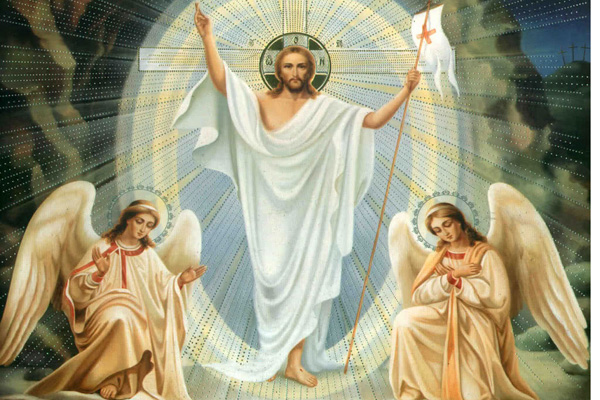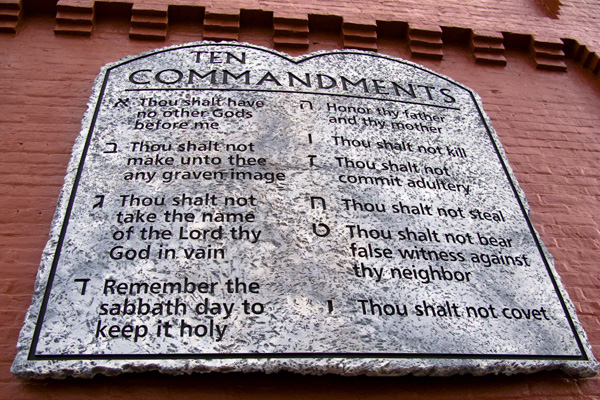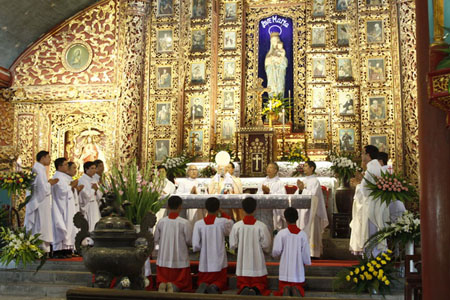Christianity first emerged in the Eastern land of the Roman Eimpire in the mid first century. During a time of Jewish struggle against the invasion and domination of the Roman Empire, the Jews looked for the promised "messiah" (anointed one)...
Christianity first emerged in the Eastern land of the Roman Eimpire in the mid first century. During a time of Jewish struggle against the invasion and domination of the Roman Empire, the Jews looked for the promised "messiah" (anointed one). Christianity was based on Judaism.
During its initial inception, Christianity was banned and persecuted in the Roman Empire. In the second century, with the decline of Roman slavery, Christianity started to change in ideology and organization. The Roman Empire's attitude toward Christianity changed from persecution to acceptance. This shift in policy culminated in Emperor Constantine issuing the Milano Decree in 313, which made Christianity the official religion of the Roman Empire. Christianity had thus passed from being a forbidden religion to the official religion of the Roman Empire.
Christianity underwent many ups and downs with a lot of events associated with an eventful historical period in Europe - the Middle Ages. This period witnessed the violent struggles between theocracy and secularism. As a result, the Catholic Church was feudalized and became a political force that dominated the secular government and ruled over all aspects of life including the economy, politics, society, culture and ideology of Europe during the Middle Ages. In the middle of the eleventh century, the first great division of Christianity occurred that led to the creation of two separate sects: Catholicism and the Orthodox Church. The second great division of Christianity took place at the beginning of the sixteenth century, resulting in the birth of a new sect - Protestantism. The Protestant reformation was followed by a series of bourgeois revolutions in Europe that narrowed the influence of the Catholic Church. The Catholic Church began carrying out large-scale missions to places like Asia, Africa and America, especially after geographical discoveries in the fifteenth and sixteenth centuries. The missions conducted during this period were the most satisfactory in the history of the Catholic Church.

In the middle of the twentieth century, the Catholic Church convened the Twenty-first Ecumenical Council (called Vatican II from 1962 to 1965) to make amendments to its policies, helping the religion adapt to contemporary social life, and prepare for the program of "remission" that would be carried out on a global scale.
The religious beliefs of Christianity in general, including Catholicism, are all expressed in the Holy Bible. It is comprised of two parts: the Old Testament and the New Testament. The Old Testament consists of 46 books about Hebrew history, the creation of the world, and texts predicting the coming of Jesus Christ as well as other writings. The New Testament consists of 27 books, four of which are about the life of Jesus and are called the gospels. The Catholic doctrine consists of the following basic dogmas: The Almighty is the only god that should be believed in and respected; Jesus Christ is the Son of God incarnated and should be believed in and respected as well; Jesus Christ was conceived by the virgin Mary; he died to atone for humanity's sins; he was resurrected; he returned to Heaven; he will return to Earth again and give his final judgment; and Catholics should believe in the universal Catholic Church, in the favor of forgiveness through the Catholic Church, and in humanity's resurrection and immortal life.
Since its beginning, Catholicism has continued to build up a detailed system of laws and rituals that are followed widely around the world. The rituals of Catholicism are deeply rooted and have hardly changed over time. They emphasize the Ten Commandments given to Moses by God. They stress the importance of monotheism, not taking the Lord's name in vain, not creating idols, resting on the seventh day, honoring your parents, not killing, not committing adultery, not stealing, not bearing false witness against others, and not coveting others' possessions. Additionally, the Catholic Church issued the Six Precepts, or duties of a Catholic, that include hearing Mass on Sundays and the Holy days of Obligation, abstaining from mourning on Sundays, confessing at least once a year, receiving the Eucharist during Easter, fasting and abstaining on the prescribed days, and fulfilling the Seven Sacraments (baptism, confirmation, confession, holy communion, last rites, holy orders, and marriage).

As defined in the Bible, the Church is a tangible organized community which is centered around Jesus Christ. The Catholic Church is known for four characteristics: one, holy, Catholic and Apostolic. It is divided into three official levels of administration: Vatican, local Church (diocese) and basic Church (parish). The dignitaries in the Catholic Church include the Pope, Cardinal, Bishop and Catholic Priest. After the period of the Vatican II, the administrative apparatus was reshuffled to become more orderly to meet the new requirements both in religious and social aspects. The universal Catholic Church is closely organized and effectively managed. In Catholicism, apart from the administrative organizations that control all of the church's activities, there is also a system of orders. According to the laws of the Catholic Church, Catholic orders are communities that are made up of people who devote their lives to God. Once accepting this lifestyle, they must commit themselves to be pure, poor but decent, obedient and loyal to the brotherhood all their lives.
Nowadays, Catholicism is one of the largest religions in the world and encompasses nearly all the nations of all the continents. In 2005, there were approximately 1,045,057,000 Catholic believers, including 130,018,000 in Africa, 519,391,000 in America, 280,144,000 in Europe, 107,302,000 in Asia and8,200,000 in Oceania. Besides, there were 3,475 bishops, including 473 in Africa, 1,391 in America, 1,059 in Europe, 458 in Asia and 94 in Oceania. Additionally, there were 405,187 Catholic priests, including 27,165 in Africa, 120,841 in America, 208,659 in Europe, 43,566 in Asia and 4,947 in Oceania. Finally, there were 218,1% parishes in the world including 11,022 in Africa, 54,682 in America, 129,565 in Europe, 20,543 in Asia and 2,384 in Oceania.



